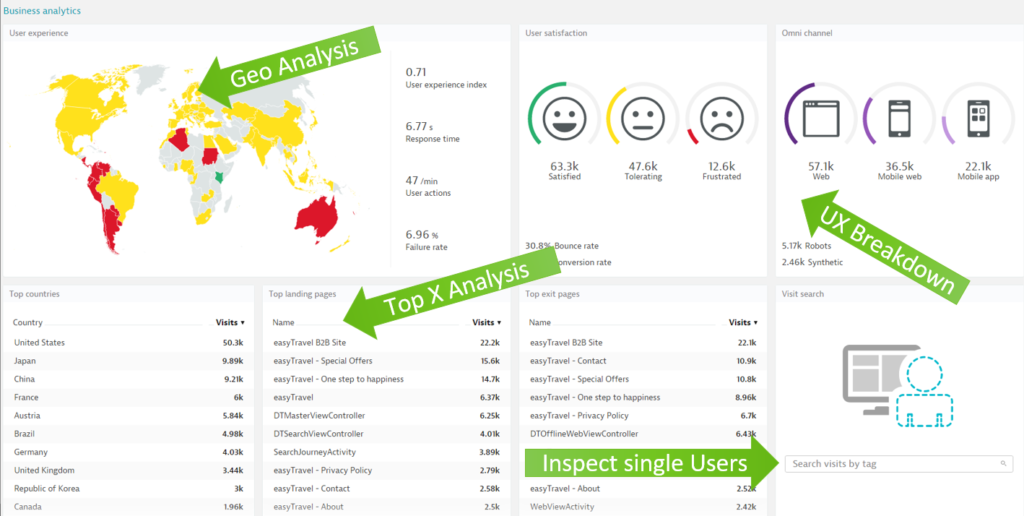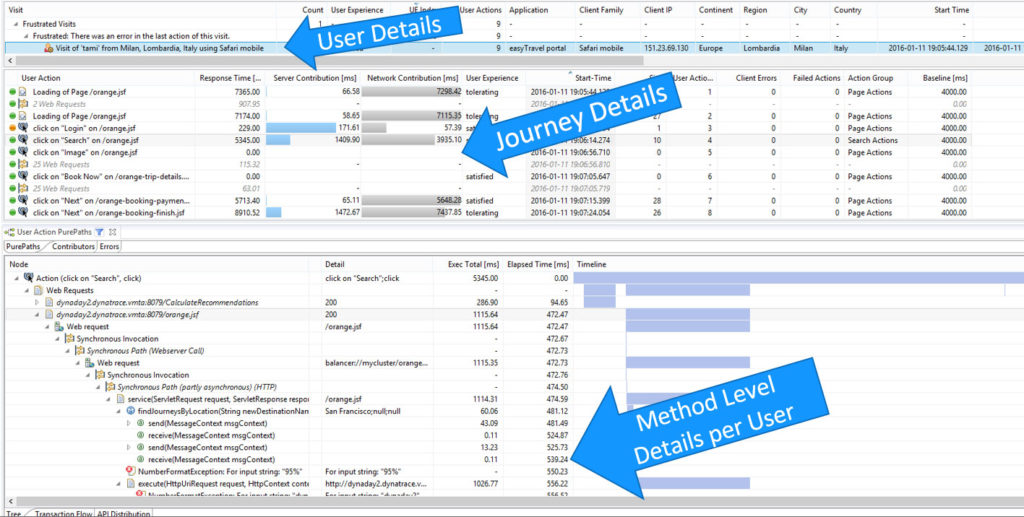
The generic customer journey is dead. One size no longer fits all – for both B2C and B2B customers. So how do you make a customer feel special when the internet has all but eliminated differentiating by product or price? According to Gartner, the delivered digital customer experience must be the key differentiator for your organization.1 So it’s no surprise that one of the top initiatives for retailers is to deliver unique and engaging experiences to each and every customer they serve, appealing to their unique wants and needs, on-line and in-store.
The first wave of targeting content, or Personalization, consisted of segmenting customers into static, broad groups across channels such as web, email, banner ads, and product recommendations. The premise was that customers can be grouped based on common criteria and targeted with relevant content, products, and offers, resulting in increased response rates, conversions, and sales. For example, a customer returning to an online clothing apparel site is recognized and their demographic information is used to recommend a broad set of products based on gender and age combined with calendar information (e.g. winter, summer) and location.
If Content is King, then Context is God. – Gary Vaynerchuck
More recently, a second wave of customer targeting has emerged called “Contextual Marketing,” which moves beyond segment-based Personalization with real-time targeting based on intent – inferring the needs of the customer in the moment that they interact with your brand. This approach is truly about the unique individual customer experience – not the segment – and the timing and intent of that customer. It is believed that greater immediacy and relevance will further increase response rates, conversions, and sales.2
As millennials grow to dominate the consumer population, Contextual Marketing evolves from a “nice to have to compete more effectively” to “critical to compete at all.” It becomes an essential tool to attract a buyer who makes 54% of their purchases on-line3 , who is adept at using technology to rapidly negotiate a retail landscape that presents lots of options from lots of outlets, where “in the moment” their intent is obvious but attention is short.
There is an abundance of research measuring the benefits of successfully implementing personalized journeys. In-House marketers report an average uplift in online sales of 19% from personalizing web experiences. Digital Agencies cite similar results for their clients, who received an average increase of 21%.4
There a number of implementation challenges marketers face when implementing a targeted content approach, including legacy technology, IT roadblocks, not enough data, too much data, inability to translate data into actions, and disparate data silos.
However, there is another more fundamental challenge to overcome. The addition of more customer data sources including real-time data (captured from geo-location services and in-store beacons), increasingly comprehensive 3rd party services for data ingestion and analysis, and the growing complexity of business and targeting rules, can all negatively disrupt the delivered customer experience – the same customer experience that is so critical to your differentiation is being undermined by the digital performance impact of delivering your targeted content.
Unique experiences delivered: The impact to IT and associated effect on CX
In a previous post I talked about the need to align IT and Marketing to deliver better CX. This is amplified by initiatives around Personalization and Contextual Commerce that are driven by the Marketing and line-of-business teams but completely depend on technology and services for which IT is responsible. In fact, common approaches to delivering personalization actively challenge IT’s efforts to deliver a consistently responsive, highly available Digital Experience:
- Caching: IT uses caching to accelerate the delivery of frequently-reused content, such as images, and rich media. With Content Delivery Networks, the information can be stored in multiple places, closer to the shopper wherever they may be. But tailoring content to the individual shopper reduces its re-usability and the likelihood that it’s actually cached in the local CDN. Unique content/pages/objects impedes the ability to offload requests to cache.
- Variation: It’s difficult to optimize the customer journey when that journey is unique for every customer and every visit. The additional steps you introduce to make their journey richer – personalization rules, multiple data lookups, real-time feedback, heuristic analysis, etc. – can produce increased and erratic web transaction response times.
- Complexity: Personalization often involves third-party connections and services, additional applications and data sources – more moving parts. And more moving parts means more complexity, which means more difficulty in detecting patterns and solving problems.
- Speed: As the complexity of customer requests increases so too the computational resources required to serve customer requests. This results in lowering the requests per minute throughput and user concurrency thresholds of the ecommerce application translating into slower response times, especially during high traffic volumes.
The impact of increased complexity and transaction slowness can be seriously bad for your delivered customer experience. Transactions that are 2x or 3x slower or even failing transactions lead to falling revenue, cart abandonment, unsubscribes, and reduced conversions to the point where targeted content is hindering sales, not accelerating sales.

Addressing Poor Customer Experience with 100% Insight
When the only interface between you and the customer is their finger and a screen, how do you get meaningful, actionable insights into your customer experiences?
All customers are unique and their experiences are increasingly becoming unique. Subsequently, each and every customer experience needs to be captured, quantified, and qualified. Relying on data that is sampled, aggregated, or averaged obscures the variation inherent in real CX patterns when providing personalized experiences. It exposes retailers to the risk of delivering poor CX but not being able to see it. This is not to say that summarizing data statistically is not useful, but that macro-level data must be accurate based on each and every individual’s experience. Poor data leads to faulty analysis, misguided decision-making, and investment in the wrong areas.

In Retail and Ecommerce, where revenue is so closely tied to CX, you need to understand each and every customer experience in granular, atomic-level fidelity in order to continually tune and optimize your application and infrastructure to deliver responsive, reliable, and consistent customer experiences wherever your customers may be in the world. This is especially important for the Personalization component which can impact customer experience by several orders of magnitude based on geography alone.
Knowing exactly who is impacted by poor CX, who abandoned their carts or didn’t convert (either by username, tracking cookie, session ID, or other identifier) allows IT to communicate back to Marketing for re-targeting and promotional offers to incent a potential lost customer to complete their transaction and save the sale.

Final Thoughts
Understanding each and every customer interaction with your ecommerce site is critical to implementing new engagement initiatives such as Personalization, or more advanced Contextual marketing.
The continuous feedback loop that needs to exist between IT (Production and Development) and Marketing is a critical component to the delivered customer experience and your online success. Marketing and IT collaboration is truly a two-way street.
________________________________________________________
1 Gartner: Critical Capabilities for Digital Commerce (June 2016)
2 Forrester: The Contextual Marketing Imperative (October 2015)
3 Econsultancy: The Realities of Online Personalization (April 2013)
4 Dynatrace: A Worldwide Digital Performance Benchmark Report for Retailers (2016)







Looking for answers?
Start a new discussion or ask for help in our Q&A forum.
Go to forum